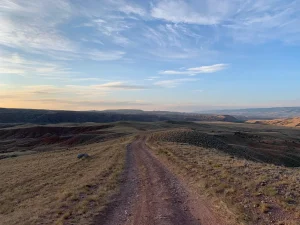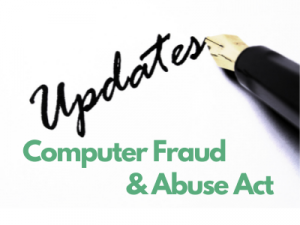alarming headlines about Taylor Swift “trademarking” her song lyrics like THIS SICK BEAT, NICE TO MEET YOU. WHERE YOU BEEN?, and PARTY LIKE IT’S 1989, as if this were some kind of extraordinary and unprecedented move to monopolize the English language. Unfortunately, but unsurprisingly, this story has been terribly misreported. The mainstream media, which hasn’t done much to actually look any further into this story, is perpetuating fundamental misunderstandings of what trademarks are and how they work. Which is a shame, because trademarks aren’t difficult to understand. Trademark law doesn’t work if the general public doesn’t understand it. Instead of hastily proclaiming her applications as some kind of foolish or sinister maneuver, perhaps we should be reminded that Swift has proved to be not only a talented entertainer, but a highly sophisticated businessperson. She knows what she’s doing. She sold more albums than any other artist last year, even after pulling all her records from Spotify, a popular online streaming music service. In fact, Swift’s album, “1989,” sold more copies than other albums since “Red,” and she already has a successful merchandising line. So let’s give her more than a little credit about her marketing decisions.
Let’s Discuss Trademark Law.
Trademark lawyers will often say that they dislike using the word “trademark” as a verb. We are kind of insufferable like that, but for good reason. The term “trademarking” does not distinguish between trademark rights, which come from using the trademark in connection with goods or services, and trademark registration, which serves of proof of trademark use and provides many strategic advantages. This brings me to my next point:Taylor Swift Filed “Intent to Use” Applications For These Trademarks.
If you review Swift’s new applications with the USPTO (United States Patent and Trademark Office), you’ll notice that they are classified as 1(b). This designation means, as stated in the applications, “the applicant has a bona fide intent to use or use through the applicant’s related company or licensee the mark in commerce on or in connection with the identified goods and/or services.” In other words, she is not actually using these phrases as trademarks yet, but she has a genuine intention to do so. Under United States trademark law, she will have no trademark registration, and more importantly, no trademark rights at all, until she has used these trademarks in commerce for these goods.Trademark and Copyright are Different
The most frustrating misconception for anyone who practices intellectual property law is this confounding idea that copyright and trademark are interchangeable concepts. They are not. When I read an article that uses these phrases as if they were the same, sometimes throwing in the word “patent”, I feel like you might have if you watched the clip of shopping network hosts arguing whether the Moon is a star or a planet. Copyright protects original, creative works of expression. Taylor Swift’s musical compositions (or musical works) are protected by copyright. Her sound recordings – the embodiment of her performance of these songs – are also protected by copyright. But short phrases can never, ever, ever, be protected by copyright. Taylor Swift cannot prevent anybody from singing a three-word lyric in their songs, and she’s not trying to. A trademark identifies a source of goods or services. It is a means of protecting a brand. We see a trademark, usually a word, a combination of words, or a graphic design, and we know the good or service is from that source. Ordinary words are often used as trademarks, like COACH, APPLE, SUBWAY, NATIONWIDE, or, SPIN. When we see the word COACH on a handbag, we expect it is manufactured by that well-known company. If we see that word on a leather carryall bag that has not been manufactured by a company that has not been authorized by Coach, then we are likely to be confused as to its source. A trademark registration serves as evidence of a valid trademark, and provides numerous enforcement advantages, but trademark rights derive from actual source-identifying use.Short Phrases Can be Trademarks
Although a short phrase can never be protected by copyright, a short phrase can certainly be used as a trademark. This is not a rare thing. We accept many phrases as sources of goods or services, think: JUST DO IT, THIS BUD’S FOR YOU, and I CAN’T BELIEVE IT’S NOT BUTTER. Even phrases that are descriptive of a company’s goods or services can become protected trademarks so long as the public has, over time, recognized those words as a designation of source – think AMERICAN APPAREL or CONTINENTAL AIRLINES. Recording artists often seek trademark protection for their band names, to protect against others using those names for recordings or entertainment services. Some artists market their own merchandise, and use their song titles or album titles as trademarks. Gwen Stefani is seeking registration for L.A.M.B for clothing. Jimmy Buffet owns numerous registered trademarks in MARGARITAVILLE for many goods, including clothing, health spa services, and “flavor enhancers used in beverage products.”So Swift Isn’t Doing Anything Unusual.
Let’s be clear on this: Taylor Swift is not “trademarking” a “song lyric.” She is not taking any action that would prevent someone from singing a song with those phrases. You can say “This Sick Beat” in your own songs, and you greet people by saying “Nice to meet you. Where you been?” What Swift is doing is seeking trademark protection for a wide variety of merchandise, and she is branding them with phrases that appear in her most popular songs. For the purposes of her trademarks, her use of those lyrics in her songs isn’t necessary. But she knows if it’s a wise business decision to choose them. Which leads me to the most important reason this story is overblown:Taylor Swift Already Manufactures These Goods
Just a brief review of the USPTO reveals that Taylor Swift owns numerous other registered trademarks for goods like clothing, posters, blankets, backpacks, key chains, and guitars. She even has registered trademarks in SPEAK NOW and TAYLOR SWIFT FEARLESS – references to her songs – and uses those trademarks as source identifiers of goods she is already selling. So it is difficult to understand why her most recent applications are causing so much attention. To be fair, it is not guaranteed that the USPTO will grant Swift’s trademark applications and register the trademarks. A trademark examiner might request that her lawyers establish that consumers will see these phrases as source identifiers when they are placed on goods. This is a problem that opportunistic applicants for I CAN’T BREATHE and JE SUIS CHARLIE will likely fail to overcome, but Swift has already demonstrated she knows how to use a trademark and build the strength of her brands. The scope of goods claimed might be too broad, but that is a problem that can be corrected. If the trademarks are registered, Swift will have the same kind of protection for her brands that so many other successful enterprises have. Haters gonna hate. Mark H. Jaffe practices trademark and copyright law and other good stuff at Tor Ekeland, PC. In preparing for this article, he heard “Starbucks lovers” every single time. Mark can be reached at mark@torekeland.com or 347-515-6849, and his twitter feed is @MarkJKings. * An earlier version of this article incorrectly stated that Gwen Stefani owned a registered trademark in L.A.M.B. for clothing. Although her company has overcome an initial refusal to register the mark, it has not yet been registered. Her company has registered the trademark for, among other things, cell-phone covers. * In the interesting of keeping this blog post short and simple, and to respond to the most misguided objections to these trademark applications, I gave only a brief mention to the potential obstacles that the applications might encounter with the PTO. I will follow up with another blog post to discuss those obstacles in more detail. ]]]]> ]]>



